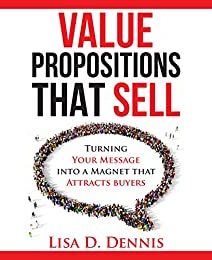One of the things that I have always done is read my writing aloud – to others or myself as a test of what I’ve created. Perhaps it is because I am a poet at heart (majored in Writing in college, and have been writing poetry for almost 40 years). The sound of the spoken word has always shown me what works, what doesn’t, and what rings true. Working with salespeople on presentations, as well as marketers with value propositions and messaging, I always ask (ok, demand!) that they include reading drafts aloud as a key piece of the development process. At the end of the day, it gets spoken anyway, either by a salesperson, or messaging that gets embedded in audio and video, or in presentations. The spoken word existed long before the written word – and that concept still is integral to crafting a real message that people will not just hear, but actually listen to.
William Taylor, Founding Editor of Fast Company magazine, recently talked about “Why You Should Read Your Memo Out Loud” in a video put out by the Harvard Business Review. When Bill speaks, I always listen, having been privileged enough to know him back when I was running the Boston chapter of Fast Company’s Company of Friends readers network. He brings out some key points that are important in the context of sales and marketing as you craft content for engaging with prospects and customers. The answers to these key questions can push you to hone the message by writing, reading aloud, then revisiting the question for further refinement. Think of it as an editorial “lather, rinse, repeat” to drive creation of messaging that will drive a prospect or customer to engage with your brand offer.
How strong is your opening statement and does it stand up when you say it out loud?
The two most important words in that sentence are “grab” and “meaningfully.” Starting with something of value to your audience that is clear, direct, bold and memorable will go a long way to gaining that first bit of engagement. Being memorable is tricky – as it must link directly to what prospects or customers care about – it needs contextual relevance in order to stick to them long enough for attention. Reading it aloud will test it as a live message. Sometimes on paper things look great, but adding” air” can change the impact dramatically. A carefully written sentence in black and white does not guarantee it will be worth listening to. The sound of it is crucial to engagement – or not.
What facts or data can be brought in to support the opener?
If you do manage to engage their attention with the opener, you need to provide a little meat quickly to keep them interested. Relevant facts or data points are the fuel that can feed the prospect’s initial interest. It helps answer their internal question of “is there more here?” But not all factoids are created equal. Is it compelling enough to back up your opening statement? Read them aloud together – do they actually sound connected? The relevance of this additional information should sound like an extension of your opener – you should be aiming for sounding natural and conversational.
Is there an actual story to tell?
Another way of asking this question is, “How pitchy does it sound?” The sound of a pitch is unmistakable, and a huge turnoff. Talking about the product or service without a story that is relevant to your audience does absolutely nothing for engagement. Again – sound keeps you honest here. I have worked with teams of marketers who work hard to craft a solid story – but when it gets to the salesperson, it doesn’t really provide all the things that make a story work: character, setting, conflict, plot, and theme. Channel your inner buyer, and ask yourself if a “story” told by a salesperson has little or no context, plot or theme – how engaged would YOU be? Not sure if the story hangs together well? Read it to someone else. Story by definition implies an audience, and you need one to help you determine if this is a story or just another pitch.
No one wants to hear a pitch.
The top reason to read your content aloud is to be sure it ISN’T a pitch. It’s the ultimate test of your message and delivery of relevant content to customers or prospects. You obviously need to communicate your offer – but to get attention it has to be all about the customer and their perspective on value. A good pitch doesn’t sound like one – so reading through your drafts can be a great way to massage your story and the message so that it is tuned to an audience’s ear. There are two levels here — read aloud to both marketing and sales personnel to get a true reality check. Mix your messaging with air to get to a memorable and compelling message faster and avoid live trial and error in the market.












